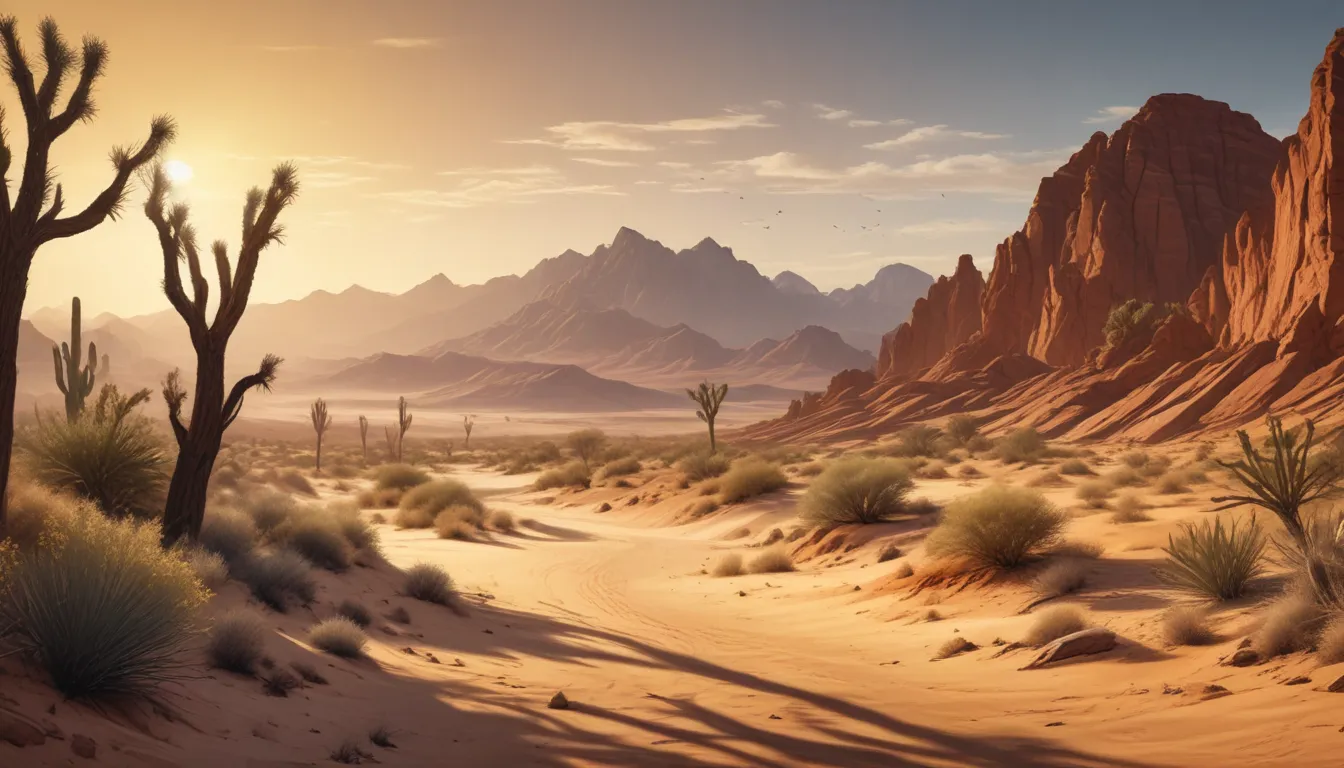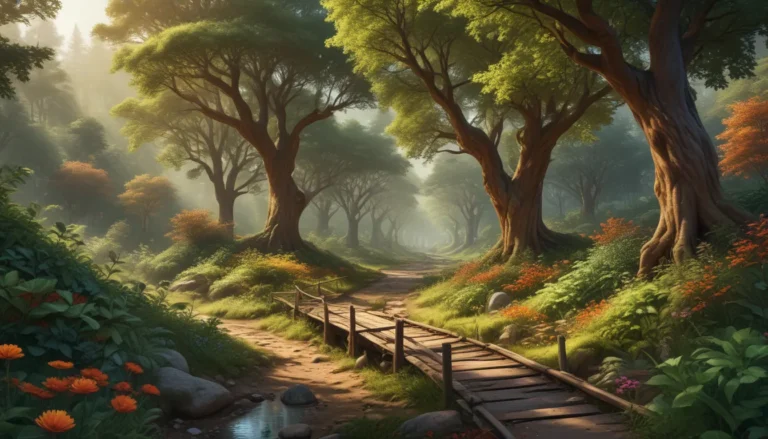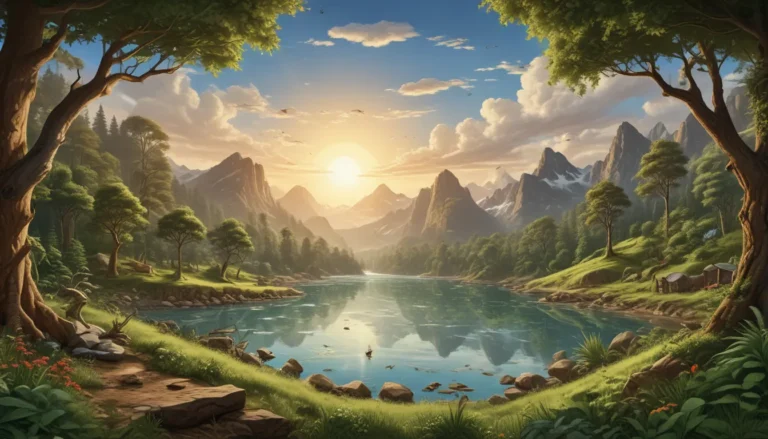A Note About Images: The images used in our articles are for illustration purposes only and may not exactly match the content. They are meant to engage readers, but the text should be relied upon for accurate information.
Deserts are more than just vast landscapes of sand and barrenness; they are extraordinary ecosystems teeming with life and unique phenomena. From the scorching temperatures of the Sahara Desert to the icy expanses of Antarctica, deserts exhibit incredible adaptability and resilience. In this article, we will delve into 19 unbelievable facts about deserts, exploring the adaptations of plants and animals, the geological formations that define desert landscapes, and the intriguing climate patterns that shape these arid regions. Whether you are an avid nature enthusiast, an adventurous soul, or simply curious about the wonders of the world, these facts will captivate your imagination and expand your understanding of the desert environment.
Embracing the Diversity of Deserts
- Deserts are not just sandy landscapes; they can also be icy, rocky, or filled with vibrant flowers after rainfall. They are home to unique creatures and ancient civilizations, making them diverse and full of surprises. – Deserts are extreme environments with scorching temperatures and minimal rainfall. Yet, they are also places of resilience, with hidden oases, ancient sand dunes, and vibrant biodiversity, showcasing the remarkable adaptability of life.
Unveiling the Enigmatic Deserts of the World
The Sahara Desert: A Hot Desert Giant
The Sahara Desert in Africa reigns as the largest hot desert globally, spanning over 3.6 million square miles – approximately the size of the United States.
The Atacama Desert: The Driest Place on Earth
In Chile, the Atacama Desert boasts the title of the driest non-polar desert on Earth, with some areas untouched by rainfall for centuries.
The Namib Desert: A Land of Towering Sand Dunes
Namibia’s Namib Desert is home to some of the tallest sand dunes in the world, towering over 1,000 feet in height and creating a breathtaking spectacle.
Antarctica: The Icy Desert
Surprisingly, Antarctica qualifies as the largest desert due to its low precipitation and extreme temperatures, showcasing a different side of desert landscapes.
The Wonders of Desert Life
Marvelous Adaptations of Desert Plants
Surviving the harsh desert conditions, plants have evolved remarkable adaptations like deep root systems, water-storing tissues, and spiky leaves to minimize water loss.
The Mysterious Mongolian Death Worm of the Gobi Desert
Legends tell of a fearsome creature known as the “Mongolian Death Worm” rumored to inhabit the Gobi Desert, adding an air of mystery to this arid region.
The Resilient Joshua Trees of the Mojave Desert
The iconic Joshua Trees native to the Mojave Desert in the southwestern United States showcase unique beauty and longevity, living for hundreds of years.
Experiencing the Sonoran Desert’s Biodiversity
The Sonoran Desert, stretching across parts of southwestern United States and northwestern Mexico, boasts rich biodiversity with a diverse array of flora and fauna.
Uncovering the Mysteries of Deserts
Natural Phenomena in Deserts: Sandstorms and Electric Fields
Sandstorms in deserts create static electricity through friction between sand particles, generating electric fields in the air during these extreme weather events.
Delving into Extreme Heat: The Danakil Depression
The Danakil Depression in northeastern Ethiopia stands as one of the hottest inhabited places on Earth, with temperatures soaring above 120°F (49°C) in this scorching region.
Traces of Ancient Civilizations in Deserts
Deserts have been home to significant ancient civilizations like the Egyptians in the Sahara Desert and Native American tribes in the Sonoran Desert, adding a layer of historical richness to these landscapes.
Vibrant Blooms After Rainfall: Deserts Come to Life
Following periods of rain, certain desert regions transform into a kaleidoscope of vibrant flowers as dormant seeds awaken, showcasing nature’s resilience and beauty.
Exploring the Human Connection to Deserts
The Densely Populated Thar Desert
The Thar Desert in India and Pakistan stands as the most densely populated desert globally, home to millions of people who have adapted to life in this arid environment.
Discovering Hidden Oases in Deserts
Despite their barren appearance, deserts often harbor hidden oases – pockets of water that sustain life for plants, animals, and sometimes human settlements in these harsh landscapes.
Unveiling Ancient Sands in the Namib Desert
The Namib Desert in Namibia boasts some of the oldest sand dunes globally, with some dating back over two million years, offering a glimpse into the ancient history of desert landscapes.
The Astonishing Adaptations of Desert Wildlife
Survival Strategies of Desert Reptiles
Certain desert reptiles, such as the Thorny Devil lizard, have evolved unique mechanisms to collect and ingest water droplets, enabling them to thrive in water-scarce desert environments.
Desert Testing Grounds for Space Agencies
Due to their unforgiving nature, deserts serve as ideal testing grounds for space agencies to simulate Mars-like conditions, preparing astronauts for extraterrestrial expeditions.
A Tribute to the Resilience of Life in Deserts
These 19 unbelievable facts merely scratch the surface of the wonders and mysteries concealed within desert landscapes. From ancient civilizations to extreme climatic variations, deserts continue to captivate our imagination and underscore the tenacity and adaptability of life in challenging environments.
Embracing the Marvel of Deserts
In conclusion, deserts are truly remarkable ecosystems that fascinate with their adaptability, diversity, and resilience. Whether it’s the vast Sahara Desert or the floral wonders after rainfall, these arid landscapes offer a wealth of natural marvels waiting to be explored. By delving into the mysteries of deserts, we not only expand our knowledge of the natural world but also gain a deeper appreciation for the perseverance of life in some of the harshest environments on Earth.
FAQs: Exploring the Fascination of Deserts
-
How hot can deserts get?
Deserts can reach scorching temperatures exceeding 120 degrees Fahrenheit (49 degrees Celsius) during the day, with drastic drops below freezing at night. -
Are there plants that can survive in deserts?
Yes, desert plants have evolved unique adaptations like extensive root systems and waxy coatings to thrive in arid environments. -
Is there wildlife in deserts?
Despite the harsh conditions, deserts host diverse wildlife, including reptiles like rattlesnakes and mammals like camels adapted to survive extreme temperatures and limited water. -
Can you find water in deserts?
While water is scarce, deserts contain natural sources like oases and underground springs that sustain life in these challenging environments. -
Do deserts have ecological importance?
Absolutely! Deserts play a vital role in regulating global temperatures, providing habitats for unique species, and offering essential ecosystem services.
Unraveling the Treasures of Deserts
Our dedication to delivering engaging and accurate content ensures that each fact about deserts is a valuable contribution from real users like you, enriching our platform with diverse insights and information. Trust in our commitment to quality and authenticity as you explore and learn about the wonders of deserts that continue to captivate and inspire us.






